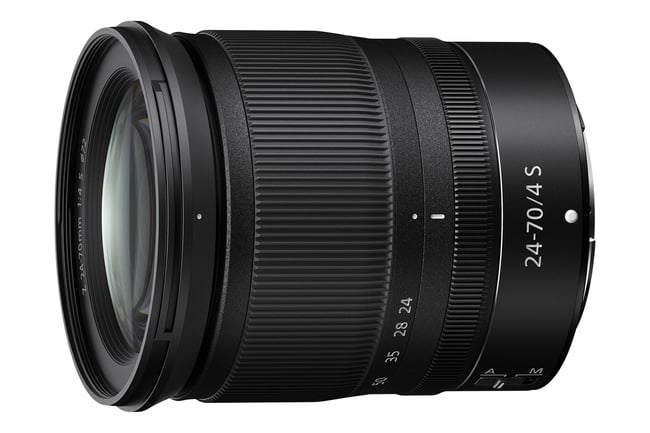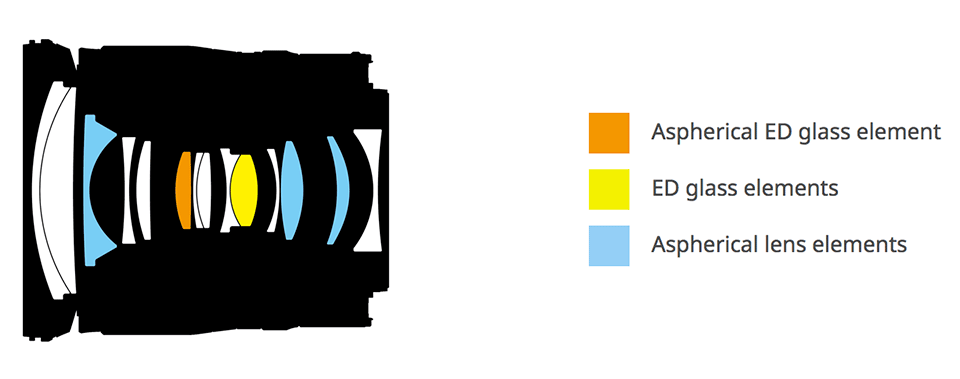Introduction
This review covers everything you need to know about the Nikon Z 24-70mm f/4 S, a lens announced in 2018 and the first zoom lens ever made for the Nikon Z system. This lens has a minimalist set of controls and a collapsible barrel, and it’s included as a package with many of Nikon’s mirrorless cameras – this has led some photographers to dismiss it as a basic kit lens. Yet, at the same time, Nikon has given the Z 24-70mm f/4 S its high-end “S” designation, meant to indicate the Z System’s signature lenses.
So, which story is more true? Is the Nikon Z 24-70mm f/4 S a kit lens, or is it a high-end optic? The reality is that it is both. Like a kit lens, the Z 24-70mm f/4 S prioritizes portability and low price, and it comes packaged with many of Nikon’s Z-series cameras. At the same time, the image quality and build quality of the Nikon Z 24-70mm f/4 S would not feel out of place in a professional photographer’s bag. This unique combination makes it a very compelling choice as a photographer’s first lens for the Nikon Z mirrorless system.
Although the retail price of the 24-70mm f/4 is $1000, most photographers will buy it as part of a kit with one of Nikon’s mirrorless cameras instead. By doing so, you’ll bring the price down to a much more reasonable $600. There’s a reason why this lens ends up in the bags of many – if not most – Nikon Z photographers.
That said, in the years since 2018, Nikon has released several other mirrorless lenses that compete directly with the Z 24-70mm f/4 S. There’s a lens with a wider maximum aperture (the Z 24-70mm f/2.8 S), one with a longer zoom range (the Z 24-120mm f/4 S), and a variety of other options ranging from budget choices to superzooms. No longer are we in an era where this is one of only three Nikon Z lenses available! So, it’s worth revisiting the Nikon Z 24-70mm f/4 S and judging it in today’s context.
To do so, our team at Photography Life has tested four copies of the Nikon Z 24-70mm f/4 S in extensive, hands-on testing that has lasted for years. This review summarizes what we have learned about the Nikon Z 24-70mm f/4 S in that time.


Build Quality
I wouldn’t say that the Nikon 24-70mm f/4 S is built like a tank. It is actually quite the opposite – slim, minimalist, and made largely of (admittedly high-quality) plastic. This is not a heavy-duty metal beast, and it is not meant to be.
Of course, that says very little one way or the other about the lens’s durability. Plastic is not inherently worse than metal as a lens design material, and some photographers even prefer it, including me. Plastic lenses don’t feel as sleek as metal, but they often function better. They don’t freeze in the cold, they weigh less, and they can even withstand some bumps and bruises more easily, depending on the quality of the plastic.
By that standard, the 24-70mm f/4 S is well-built. It fits snugly on Nikon Z cameras with absolutely no detectable wobble on the mount. The lens does extend when zooming from 24mm to 70mm, using a two-stage telescoping barrel. Zoom lenses of this design frequently wobble at their longest setting, and I was worried the 24-70mm f/4 S would as well. However, up to about 60mm, the lens cannot be wobbled at all, and 70mm only allows the slightest amount – not anything objectionable, and better than expected.

The Nikon Z 24-70mm f/4 S weighs just 500 grams / 1.10 pounds. That compares well to most other midrange zooms available for the Z system, such as the Nikon Z 24-120mm f/4 S (630 grams) and Nikon Z 24-70mm f/2.8 S (805 grams). However, it is only slightly lighter than the Nikon Z 28-75mm f/2.8, which weighs 565 grams. If you prioritize a wider maximum aperture while maintaining a light weight, it’s worth giving the 28-75mm f/2.8 lens a look.
The Nikon Z 24-70mm f/4 S is thoroughly weather-sealed. Nikon’s promotional images in its NIKKOR Z Brochure show six separate rubber rings, covering the front element, rear mount, telescoping barrel, zoom ring, and focus ring. There is also a separate weather seal underneath the A/M switch. In short, all the moving parts on this lens have weather sealing.
That said, the telescoping barrel still is not ideal. I am not too concerned about the rain; even though droplets can fall on the barrel and then retract into the lens, Nikon’s extensive weather sealing will likely prevent them from reaching anything important. However, sand and dirt can potentially get stuck in the retracting barrel, leading to harsher zooming over time. In several years of using the Nikon Z 24-70mm f/4 S, the zoom ring has gotten a bit stiffer over time for this reason.
Plus, more moving parts means more things to go wrong if the lens is dropped or bumped. Even my Nikon 14-24mm f/2.8G lens, which only has a moving front element (within a nonmoving lens hood), has locked up before in winter conditions because a ring of ice formed around it, preventing me from zooming out. All else equal, I prefer lenses with an internal zoom.

Handling
The handling of this lens is interesting, and unfamiliar if you’re used to Nikon F-mount lenses. The biggest point to note is that the 24-70mm f/4 S has a locking mechanism to retract the lens for travel. All you need to do is rotate the zoom ring “wider than 24mm.” Here’s a comparison of the locked lens versus at 24mm:

You can’t take pictures when the lens is retracted; the Z cameras do not allow it (nor would you want to). However, an interesting thing to note is that you can very slightly retract the lens before the camera locks up, which turns this into something like a 23-70mm f/4 lens. However, image quality in the corners at this fake 23mm setting diminishes somewhat, and vignetting increases, so I recommend against using it unless your composition offers no other choice!

The design of the Nikon Z 24-70mm f/4 S is very minimalist. There’s just one switch to be found on the lens, which controls autofocus/manual focus. There’s only one other customization offered by the lens: The thin manual focus ring can be set to a few different applications, such as power aperture or exposure compensation. However, 99% of photographers will leave it to manual focus all the time.
Personally, I would have liked to see a VR On/Off switch on the 24-70mm f/4 S, even though it would only control IBIS in the camera body itself. It also would have been nice to see a custom function button and an additional customizable dial. But if you want all of those features, you’ll need to pick a higher-end lens like the Nikon Z 24-70mm f/2.8 S or Nikon Z 24-120mm f/4 S.

Specifications
- Mount Type: Nikon Z Mount
- Focal Length: 24mm to 70mm zoom (2.9× zoom)
- Angle of View (DX): 61° to 21°50′
- Angle of View (FX): 84° to 34°20′
- Maximum Aperture: f/4 at all focal lengths
- Minimum Aperture: f/22 at all focal lengths
- Aperture Blades: 7, rounded
- Filter Size: 72mm
- Lens Elements: 14
- Lens Groups: 11
- Special Elements: 1 ED glass, 3 aspherical, 1 ED/aspherical
- Super Integrated Coating: Yes
- Nano Crystal Coating: Yes
- Fluorine-Coated Front Element: Yes
- Electronic Diaphragm: Yes
- Vibration Reduction: No
- Internal Focusing: Yes
- Internal Zooming: No
- Control Rings: Zoom, focus
- Function Button: No
- Focus Motor: Stepping motor
- Minimum Focus Distance: 30 cm (0.98 ft)
- Maximum Magnification: 0.30× at 70mm (1:3.3)
- Mount Material: Metal
- Weather/Dust Sealing: Yes
- Dimensions (Length × Diameter): 89 × 78 mm (3.5 × 3.1)
- Weight: 500 g (1.10 lbs)
- MSRP: $1000 (down to $600 when part of a kit)
Here is the construction of the lens, courtesy of Nikon:

The next page of this review covers the optical characteristics of the Nikon Z 24-70mm f/4 S, including focusing performance and sharpness tests in the lab. Click the menu below to go to “Optical Performance”:
Table of Contents